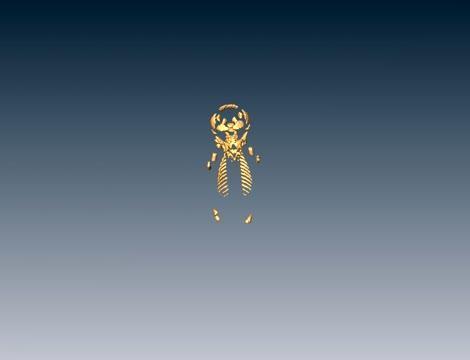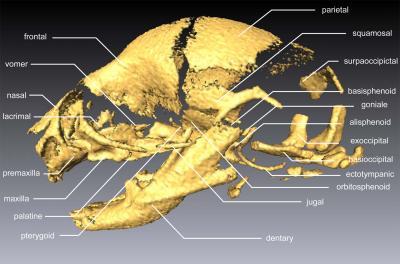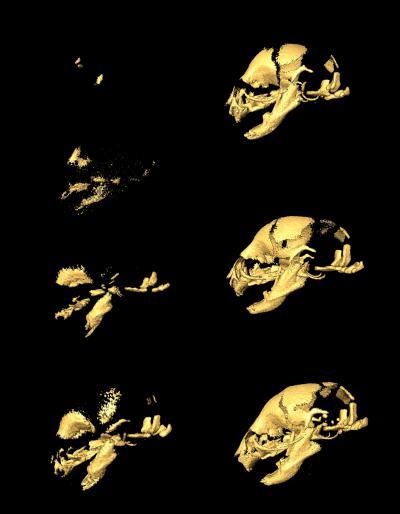As Daisuke Koyabu, now at University of Tokyo, who conducted the studies while he was a post-doc under Sánchez-Villagra, was able to demonstrate, the different bone types do not develop synchronously: Dermal cranial bones form before the endochondrals. According to Sánchez-Villagra, this indicates that the individual bones form based on a precisely defined, coordinated schedule that is characteristic for every species of animal and enables conclusions to be drawn regarding their evolutionary relationships in the tree of animal life. The researchers also discovered that individual bones in the area around the back of the head have changed their development plan in the course of evolution. "The development of larger brains in mammals triggered the changes observed in the development of bone formation," Sánchez-Villagra.
Mammals: masticatory apparatus first

This shows skull and skeletal development of a 25-year-old musk shrew embryo.
(Photo Credit: Video: UZH)
With the aid of quantitative methods and evolutionary trees, the researchers ultimately reconstructed the embryonic cranial development of the last common ancestors of all mammals, which lived 180 million years ago during the Jurassic period. As with the majority of mammals, its cranial development began with the formation of the masticatory apparatus bones.

This shows skull bones of the Japanese field mouse (picture: UZH)
(Photo Credit: Picture: UZH)

This shows the different stages of skull development in the Japanese field mouse. (picture: UZH)
(Photo Credit: Picture: UZH)
Source: University of Zurich